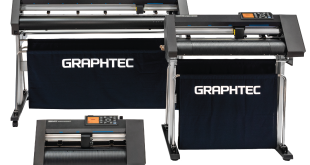
Dmitry Sarbaev, managing director of FLUXMALL DTG, writes from Vietnam about the country’s impact on the global garment decoration market.
As the Lunar New Year holidays have officially come to an end, and we finally find ourselves in year 2023, both in traditional and lunar calendars, the garment decoration industry made its New Year resolutions and established new plans for the year ahead.
Being located in the world’s manufacturing hub for apparel and fashion – Ho Chi Minh City, Vietnam – I would like reflect on how the digital printing industry on garments might evolve in this mass production country and beyond, and how it will inevitably affect global markets.
Global brands remain active in south-east Asia countries
With the energy crisis affecting the Western markets, South East Asia (and Vietnam in particular) continues to be an attractive manufacturing spot on the map for global brands, not only because of low labour costs and affordable production overheads, but also the flexibility of local manufacturers to quickly adapt to the new normal and promptly deploy new tech advancements in their factories. The end-customer has become demanding for customised fashion products and swift changes of collections, so the brands have to respond accordingly to this fast-pace ‘mode’ and contract factories with availability of smaller production runs and shorter turnaround times. The buyers are actively looking for developed, reliable facilities to handle digital printing orders, imposing strict conditions of low MOQ (minimum order quantity), full colour designs and very tight deadlines.
Vietnam has significantly progressed in this component over the recent years, and continues to gain the momentum of digital transformation, and many factories adapted to the new requirements in order to keep the export businesses. However, with the number of estimated digital printing machinery placement, the market is still small compared to developed Chinese and Korean markets. It’s no surprise that many digital printing orders end up in these countries, therefore Vietnam is still a runner up in the volumes of digital printing orders, but as new manufacturing startups get stronger, this gap will inevitably be closing in years to come.
The rise of local Vietnamese fashion brands is another positive trend over the recent years, and though many of them were significantly affected during COVID-19 pandemic, they are now being reinforced by the high consumer demand domestically, and make enthusiastic and ambitious plans to enter the western markets with their products. A big advantage to this business model is that many of them have their own manufacturing assets in the country or the region, or hold strong long-term partnerships with factories around that back them on high-volume production. Therefore, they are able to enter the foreign markets at much lower-level price points while having many years of experience in manufacturing for the quality fashion. Similar to how the Vietnamese automobile brand Vinfast is currently invading the US market of cars with its top-notch products, it will be no surprise to see these fashion brands make solid steps abroad.
China machinery becomes strong in competition
Over the years industry consumers have blamed China on the low quality of products and services – raw materials, components, assembly works, and lack to zero support. China seemed to have silently absorbed all the claims, made conclusion and worked behind the scenes to make improvements. It is now obvious that China is not the same anymore, and specifically in the digital printing sector many OEMs have made significant steps forward on the following items:
- Global awareness
You can hardly think of any global printing tradeshow or digital textile conference where the presence of Chinese manufacturers is non-essential. A lot of the OEMs actively take part in online educational events organized by the recognised information networks. Now when China has reopened after COVID-19, many Chinese companies are expected be present in upcoming tradeshows, including the most expected ITMA 2023 in Milan.
- International business development
The other way around, you can witness a lot of foreign customers visiting Chinese factories for various business meetings and tech trainings. The Chinese OEMs seem to have been intentional in building their own partner networks and establishing clear rules across their distribution channels. Many factories for Chinese digital printing equipment engage in digital marketing worldwide and support educational initiatives to promote their developments.
- Response times and expertise of pre-sales and after-sales
Most importantly, the qualifications of sales teams, the ‘fast and furious’ response of technical support teams, and the excellent proficiency of English of the younger generation that work for the OEMs make it much easier for the partners to be onboarded in the distribution networks to deliver solutions to the global markets
- Fast adapting for tech innovations
Chinese OEMs seem to be ahead of their western competitors on the R&D work leveraging the advancements of the latest print heads released to the market in 2018 to 2021. A lot of recently introduced garment printers are built up on the electronic boards developed by Chinese tech companies which gives China once step ahead in the innovations’ development for the market.

DTF continues to complement DTG penetrating into industrial sector
Direct to film printing entered the industry in 2020 by a storm attracting a lot of garment decorators with a cheap entrance ticket: prices of machinery affordable for entry-level businesses and very low costs of printing artworks on the films. Whereas there were many factors that have rapidly driven DTF decoration method forward, i.e. the access to new type of print heads for many OEMs, boosting e-commerce models in the times of the pandemic, China’s strong domestic supply chain to export DTF solutions, and global RIP software companies picking up the trend to push the DTF forward, the garment decorators started to approach the onboarding for this printing method in a more responsible way, when quality and sustainability are at stake.
The ability to have digital prints heat transferred to virtually any type of fabrics, including nylon and polyester, has given a lot of room for creativity of many performance and sportswear manufacturers. As the result, the manufacturers are looking for solutions that will bring DTF to the industrial scale, streamline the workflow and ensure consistency across thousands of prints with many different designs. It is inevitable that the world-known DTG OEMs will jump in and introduce their own machines, production workflows and even concepts that will allow DTF to migrate into a more mature technology, allowing it to complement effectively DTG and even conventional screen printing.
Hybrid solutions arise to foster print complexity
The word hybrid is widely recognised to describe multiple decoration methods being used together for the benefit of the print. It is sometimes used to point out that a single commercial digital printing unit can handle both decoration methods (i.e. DTG and DTF) – after all, it is the same print head using the same inkset to deliver the print on different substrates.
It is also often used to indicate a combination of different methods – utilising several pieces of different equipment attached to each other, or an all-in-one solution – to get the printing job done at a lower cost than any of these methods can provide when being solely used. Regardless of a particular situation when the hybrid approach is applied, it enables garment decorators to do a lot of complex printing works of rich, attractive prints with varieties of different colours, handfeels and special effects. For instance, doing a discharge via the screen, printing the colour layer digitally on top and highlighting white spots can result in an amazing digital full-colour print with no handfeel. By all means the decorators will seek new ways how to adopt these hybrid solutions in their production premises and run very sophisticated printing jobs.
It is exciting to see how digitalisation and sustainability empowered by the experience of conventional decoration methods, the access to rapidly developing print head technologies, and the AI assistance in artwork creation and design will contribute to the fast evolution of the industry. No doubt 2023 will open up a lot of new opportunities for both equipment and software manufacturers and garment decorators across different markets in many parts of the world.
 Printwear & Promotion The Total Promotional Package
Printwear & Promotion The Total Promotional Package




